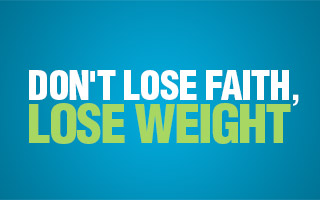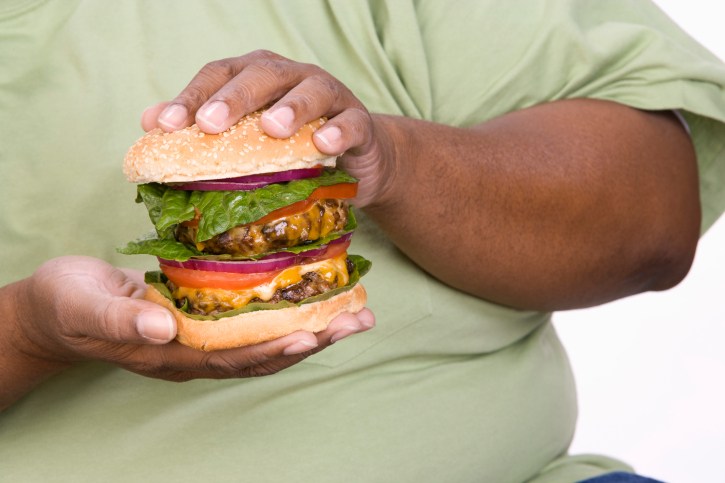Fight fat to help your heart
Carrying extra pounds around your middle could tip the scales toward cardiac disease.
You know you've put on weight when the bathing suit that fit perfectly last summer is now too tight and a lot less flattering. Weight gain is hard on the ego, but it's even harder on your heart—especially when that weight is centered around your middle.
Fat is dangerous to the heart, and not only because it increases the risk for conditions that contribute to heart disease, such as high blood pressure, high cholesterol, and diabetes. The fat located in your abdomen—called visceral fat—lies deep enough to surround your organs and disrupt their function.
"The fat around the belly is particularly metabolically active, meaning that it produces a number of factors that increase the risks for heart disease," explains Dr. Paula Johnson, associate professor of medicine at Harvard Medical School. Those factors include hormones and other substances that promote inflammation, raise blood pressure, alter cholesterol levels, and interfere with normal blood vessel activity.
For older women, the risks of belly fat are particularly troubling, because the lack of estrogen after menopause changes the way fat distributes. Many of us transition from a pear shape (curvier hips and thighs) to an apple shape, which means more fat accumulates around our middle.
Subcutaneous fat is located just under the skin, while visceral fat lies deeper and can wrap around organs.
Waist size and heart risks
A tape measure is one of the most important diagnostic tools your doctor will use, because it could provide an early warning that you're headed for heart disease. Increased waist circumference—an indicator of abdominal fat—is part of a cluster of heart disease risks called metabolic syndrome. They include
-
waist measurement of 35 inches or more
-
triglyceride (blood fat) level of 150 mg/dL or higher
-
HDL ("good") cholesterol level of less than 50 mg/dL
-
blood pressure reading of 130/85 mm Hg or higher
-
fasting blood sugar level of 100 mg/dL or higher.
"If you have three of these risk factors, then you have metabolic syndrome. A waist circumference measurement can give you a really good idea of whether or not someone will meet the criteria for metabolic syndrome," Dr. Johnson says.
Waist-watching through the indulgent holiday season
Holiday food binges can set even the most faithfully healthy diet back by several months, and make you put on extra inches around your middle. You don't have to give up your turkey and pie this holiday season, provided that you make a few healthy modifications to them.
-
Peel the skin off your turkey and eat the white meat only—it's lower in fat than dark meat.
-
Use low-sodium chicken broth in your stuffing recipe instead of butter.
-
Add cornstarch and water to bird drippings instead of butter and flour to slim down your gravy.
-
Eat a whole-wheat roll instead of white. Dip it in olive oil rather than spreading on butter.
-
Cut your normal pie slice in half to save on calories. Top it with a small spoon of reduced-fat whipped topping or frozen yogurt instead of ice cream.
Beating belly fat
Here are a few tips for banishing this particularly unhealthy type of fat:
Cut back on candy, cookies, and white bread. "Eating a large number of simple carbohydrates—sugars and simple starches—increases central obesity because they're broken down very quickly. You get a burst of insulin, and this stimulates the production of central body fat," Dr. Johnson says.
Trim portion sizes. Keep calories in check by cutting large restaurant meals in half or even thirds, and by serving dinners at home on a salad plate.
Go low on the glycemic index. Compose the bulk of your meals from fruits, vegetables, and whole grains. Many of these foods are low on the glycemic index, meaning your body breaks them down slowly, leaving you feeling full for longer.
Eat better fats. Switching to healthier fats alone won't help you lose weight, but it will help lower your heart disease risk. Avoid saturated fats (found in meats and butter) and trans fats (in fried foods and baked goods). Monounsaturated and polyunsaturated fats in fish, nuts, and certain oils (olive, canola, flaxseed) can improve the health of your heart and blood vessels.
Stay active. Exercise at a moderate pace (such as by taking a brisk walk or bike ride) for at least 150 minutes a week—or for even longer if you need to lose weight.
-
Reactions To My Weight Loss
I just returned from a week-long conference in Florida. My husband an
-
Are You Snacking Enough To Lose Weight
If you want to lose weight you are going to have to change some things
-
Funniest Weight Loss Jokes: De-stress and Boost Your Endorphin Levels withOur Fat Jokes Selection
A few weight loss jokes a day keep the fat away ~ Brainy Weight LossIf
-
What Is Dynamic IT?
Dynamic IT is based upon advancements in technology and thinking behin
-
International No Diet Day 2016
The international no diet day is a day that is set aside to celebrate
-
Keep Yourself Off The Fat List
With the UK governments recent proposal to provide personal trainers t
- DON'T MISS
- Cardio Or Weights First For Best Fat Burning
- Cacao Matcha Pick-Me-Up Smoothie
- Weight Loss Tips that Everybody Can Use
- Is Alli Your Ally?
- Curing Chronic Constipation
- Proactol Reviews - A New Weapon In The Diet Revolution?
- Rapid fat loss techniques!
- Five Healthy Weight Loss Tips
- Speeding Up Metabolism - Secrets to Keep Your Metabolism in Hyperdrive
- Hoodia Gordonii Succulent Miracle Pills





